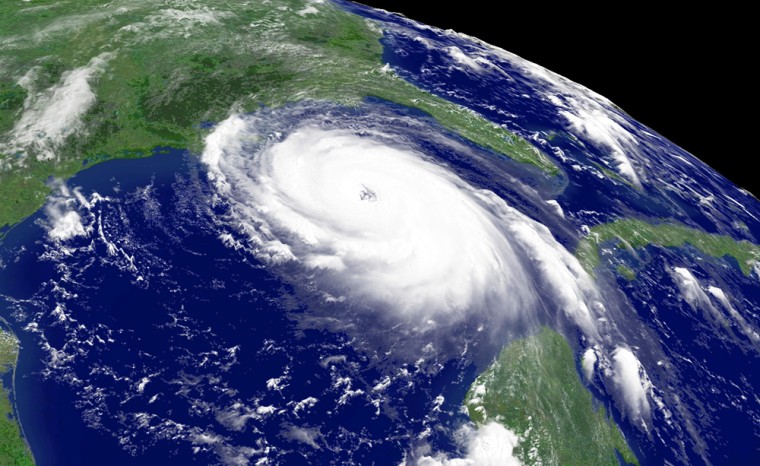Most of the increase in ocean temperature that feeds more intense hurricanes is a result of human-induced global warming, according to a study published Monday that used 22 computer models to play out dozens of scenarios.
Tom Wigley, a co-author and a climate scientist at the National Center for Atmospheric Research in Boulder, Colo., said the study “closes the loop” between climate change and powerful storms like Hurricane Katrina. The study follows research papers over the past year or so that have shown an increase in the power of hurricanes, but also skepticism from some experts who question the reliability of computer models.
Wigley's team had the backing of several peers at a briefing for reporters Thursday ahead of the publication of the new study in the Proceedings of the National Academy of Sciences.
Robert Corell of the American Meteorological Society, who moderated the briefing, said the study builds a connection between the theoretical foundation of global warming and changes that are being observed in those Atlantic Ocean areas where hurricanes are born.
“What we’ve seen in the past is small beans compared to what we’ll see in the future,” Wigley said at the briefing.
In a statement released with the study, Wigley said that “the important conclusion is that the observed SST (sea surface temperature) increases in these hurricane breeding grounds cannot be explained by natural processes alone. The best explanation for these changes has to include a large human influence.”
Two-thirds human?
Wigley estimated that around two-thirds of the ocean warming was due to human burning of fossil fuels, which release greenhouse gases, but acknowledged that the science is not precise.
Climate models are complex sets of mathematical equations that high-speed computers use to simulate weather and climate and to forecast changes. The researchers used them to run 80 different simulations analyzing the response of sea-surface temperatures to a variety of factors and then compared the results from the independent models.
Modeling with just natural variables produced “much smaller” temperature changes of around 1 percent or less, Wigley said.
While previous studies have looked at entire oceans, this work focused on the smaller areas of the Atlantic and Pacific where tropical storms form.
While they reported the connection between rising ocean temperatures and increasing storm power, the researchers declined to predict future changes.
Asked at the briefing if they would recommend changes in public policy, Greg Holland of the National Center for Atmospheric Research said, “It is important to note that we’re not policymakers. Our role is to present the best possible conclusions from the available evidence.”
Kerry Emanuel, a hurricane expert at Massachusetts Institute of Technology, added that regardless of global warming, the United States does need to address problems in dealing with hurricanes ranging from insurance to disaster response.
Expert questions models
Not so sure of the findings was William M. Gray of Colorado State University, a longtime hurricane expert who issues forecasts each year of the expected number of storms.
Gray said the models do not deal with all necessary ocean processes and called the report “a desperate attempt to keep the bandwagon going. They’ve kept it going with global warming and now they want to keep it going with hurricanes.”
“I am very sure over the test of time it will not hold up,” said Gray, who was not part of the research team.
Philip Klotzbach, also of Colorado State, said that “sea-surface temperatures have certainly warmed over the past century, and that there is probably a human-induced component.
“To me, the big challenge is still determining what percentage is natural and what percentage is caused by humans. This paper sheds some light on that question; however, there is still a considerable amount of uncertainty,” he said.
Christopher Landsea, a meteorologist at the National Oceanic and Atmospheric Administration’s Hurricane Research Division in Miami, praised the new paper as very well thought out.
But, he said, while the paper discusses sea-surface temperature increases, it does not address the sensitivity of hurricanes to ocean temperature changes or questions about hurricane records in prior years.
While studies by Emanuel in Nature and Peter Webster of the Georgia Institute of Technology in Science reported increases in the most powerful storms, Klotzbach challenged those findings in Geophysical Research Letters, reporting only a small increase and suggesting that may be due to improved observation technology.
